Neurotoxin & Filler Training Bundle
- CME Accredited | AMA PRA Category 1 Credits™
Our injection training course educates practitioners how to utilize a wide range of neurotoxin and filler products, as well as teaches practice-changing concepts that combine a safe, individualized approach with sophisticated techniques to produce superior patient results.
Neurotoxin Online Course Outline
- Overview
- Module 1
- Module 2
- Module 3
- Module 4
- Module 5
- Bonus
Course Overview & Outline
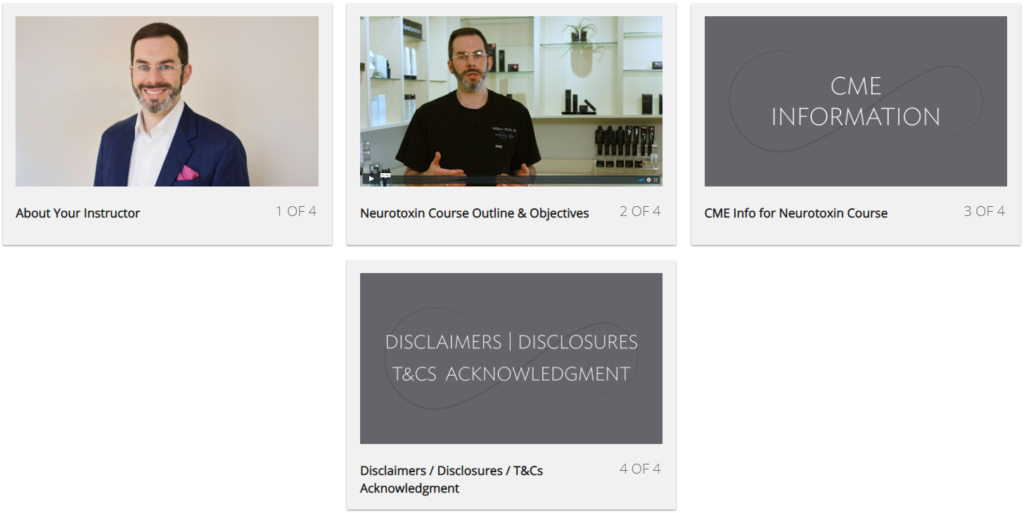
Assessment of The Face for Dynamic Wrinkles
After completing this module, you will be able to:
- Assess patients’ concerns and determine the root cause of underlying issues
- Assess if neurotoxin should be utilized and if so, how much
- Determine where neurotoxin should be injected, and the impact of its placement on other areas of the face
- Consult with a patient before, during and after treatment
- Discuss treatment planning, expectations management, and results assessment
- Discuss common safety features and product misconceptions
- Treat a wide variability of patients across different ages, genders and ethnicities
- Understand what type of results you can achieve based upon the scope of procedures offered at your practice

Upper Face – Forehead, Glabella, Crow’s Feet/Lateral Canthal Lines, Bunny Lines/Nasalis
After completing this module, you will be able to:- Understand patients’ concerns to build a treatment plan that delivers desired results
- Know when to treat an individual area vs. all areas
- How to properly inject preventative neurotoxin in younger patients
- Determine maximum dosage without producing adverse side effects (droopy eyelids, heavy brows, etc.)
- How to determine if a patient is a good candidate for a neurotoxin brow lift
- How to properly administer a neurotoxin brow lift

Perioral – Lips, Chin, DAO
After completing this module, you will be able to:- Properly inject neurotoxin in the upper and lower lip vertical lines
- Assess when to use neurotoxin alone versus in combination with other treatments (e.g., fillers, laser, etc.)
- Enhance lip visibility through correcting gummy smiles
- Correct downturning in the marionette area (corners of the mouth) though the use of neurotoxin alone or in combination with filler
- Treat chin wrinkles (cobble stoning)

Neck
After completing this module, you will be able to:- Determine which concerns in the neck are treatable with neurotoxin
- Address common misconceptions of neurotoxin use in the neck
- Manage expectations regarding result possibilities, number of treatments required and the potential need for additional treatment.
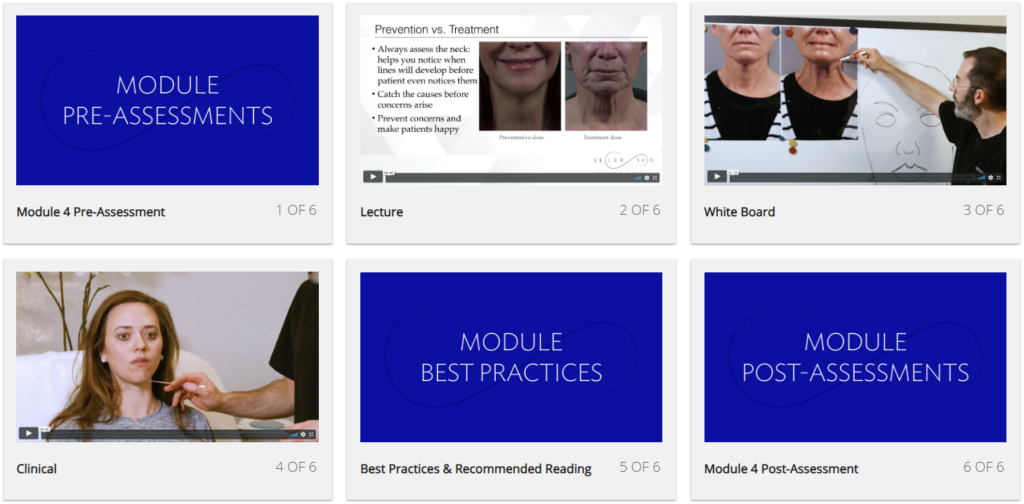
Cosmetic Migraine and TMJ
After completing this module, you will be able to:- Determine when you alone can treat a patient and when a neurology or dental/oral surgery referral is required
- Determine if patients’ concerns can be treated with a “cosmetically pleasing” dose
- Titrate treatment dosage depending on the severity of a patient’s concern without compromising cosmetic results
- Identify the degree to which specific areas are contributing to a patient’s concerns
- Communicate with the patient about the number of treatments required to achieve their desired results
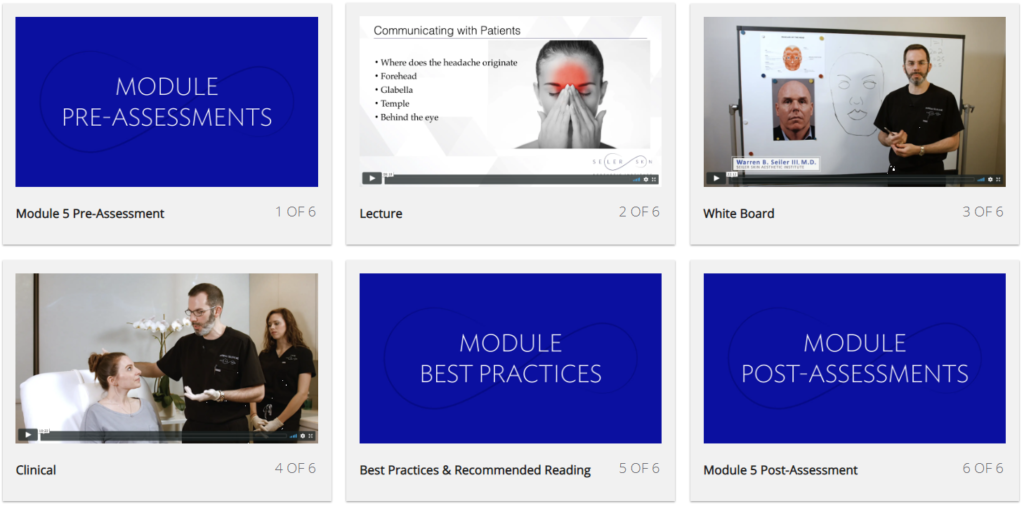
Additional Bonus Content

Filler Online Course Outline
- Overview
- Module 6
- Module 7
- Module 8
- Module 9
- Module 10
- Bonus
Course Overview & Outline

Assessment of The Face for Volume Loss and Laxity
After completing this module, you will be able to:
- Assess patients’ concerns and determine the root cause of underlying issues
- Assess if filler should be utilized and if so, how much or how little is needed to achieve optimal results
- Understand the artistry of facial analysis, DaVinci’s facial ideals, Hinderer’s lines, the Marquardt Face and Phi Proportions
- Understand the difference between dynamic and static lines (treated respectively with neurotoxin and filler)
- Understand the different characteristics of filler such as consistency, water absorption, G Prime and thickness
- Determine where filler should be injected and understand the impact of its placement on other areas of the face
- Consult with a patient before, during and after treatment
- Understand and utilize Dr. Seiler’s proven CCAPP method for facial analysis
- Instruct your patients to show you their desired results by examining them using a mirror
- Teach your patients what filler alone can achieve, and when combining filler with other treatments is ideal
- Discuss treatment planning, expectations management and results assessment
- Discuss common safety features and product misconceptions
- Treat a wide variability of patients across different ages, genders and ethnicities
- Recommend filler in younger patients for maintenance and prevention, or in older patients in combination with other treatments
- Understand what type of results you can achieve based upon the scope of procedures offered at your practice (e.g., laser, platelet rich plasma, aesthetic, surgery, etc.)
- Safely and effectively inject after assessing vascular structures and potential danger zones
- Use vessel location technology to avoid bruising and/or vessel injection/occlusion
- Recognize a patient with unrealistic expectations and/or body dysmorphia
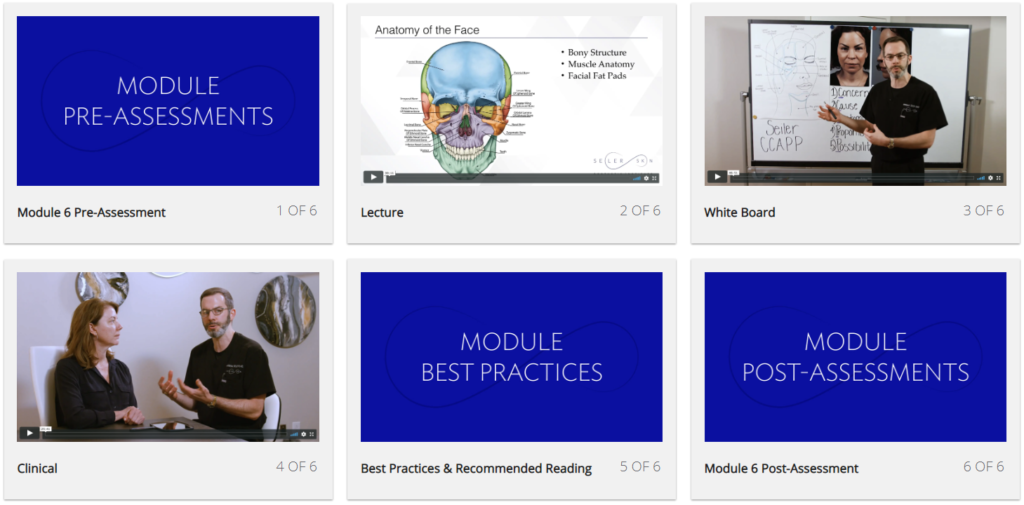
Midface and Cheeks — Brows and Temple
After completing this module, you will be able to:- Assess patients’ concerns and determine the root cause of underlying issues
- Assess if filler should be utilized and if so, how much or how little to use to achieve optimal results
- Use a full-face approach to understand what areas need to be injected to achieve results (e.g., cheeks may need to be lifted with filler to address nasolabial folds)
- Understand the difference between deep and superficial fat pads
- Safely and effectively inject after assessing the vascularity in all areas
- Teach your patients the difference in volumizing and lifting versus treating lines

Tear Trough
After completing this module, you will be able to:- Assess patients’ concerns and determine the root cause of underlying issues
- Determine if patients have potential contraindications such as allergies or skin issues, and if they are candidates for filler(s)
- Conduct squinting test to look for the presence of fluid or allergies
- Understand what type of results you can achieve based upon the scope of procedures offered at your practice (e.g., laser, platelet rich plasma, aesthetic, surgery, etc.)
- Assess which type(s) of filler are needed to address patients concerns
- Safely and effectively inject potentially dangerous areas
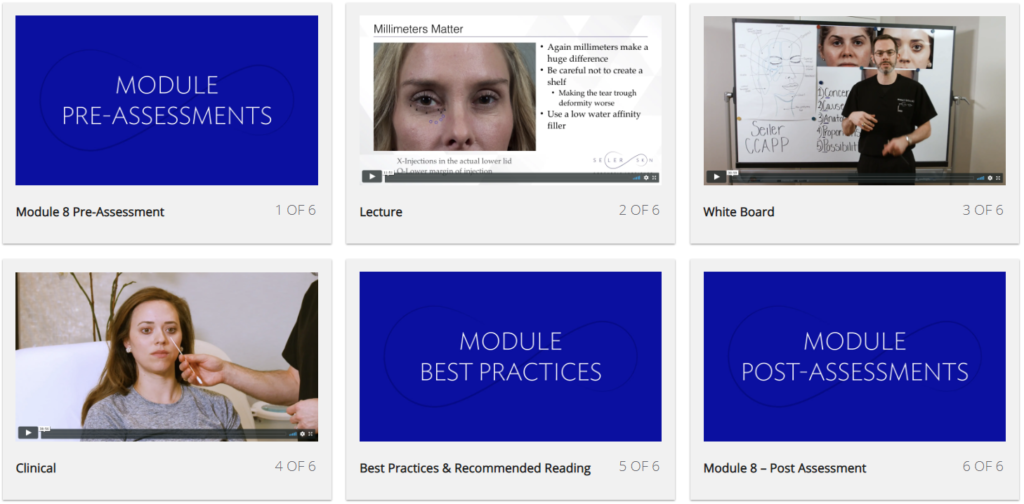
Lips
After completing this module, you will be able to:- Understand the anatomy and the proportions of the lips
- Understand the different types of filler for this area
- Understand patients’ concerns to build a treatment plan that delivers desired results
- Minimize the risk of bruising and discomfort
- Determine if patients’ expectations are realistic and if their concerns can be treated
- Explain the benefits of lip filler and how to allay their fears
- Understand the five different levels of lip filler and how precise injections must be to achieve success
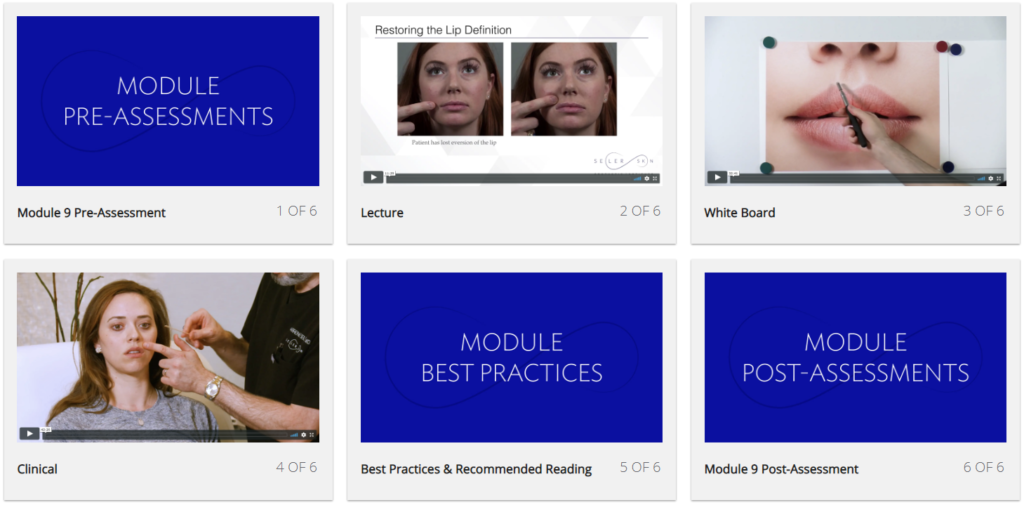
Perioral — Nasolabial Fold, Marionette, Chin and Nose
After completing this module, you will be able to:- Know when to and when not to inject in this area
- Understand when the nasolabial fold is a patient concern but should not be (normal anatomy)
- Identify when other areas need to be injected to make a difference in this area
- Understand how much you can improve this area without other procedures
- Perform a chin augmentation/enhancement with a small amount of properly placed filler
- Assess and treat the nose to achieve straightening, narrowing, a reduction in bumps, etc. (perform a “filler nose job”)
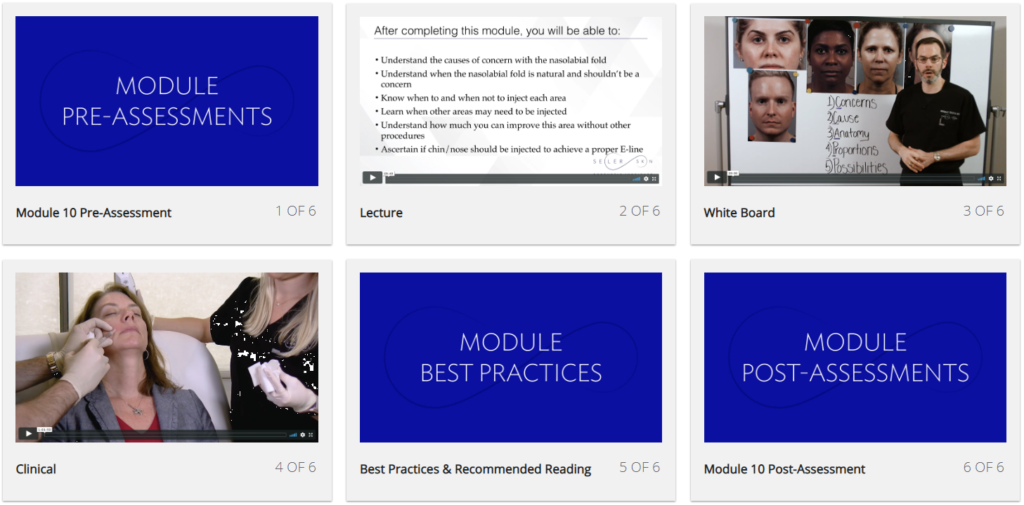
Additional Bonus Content

I was fortunate to have the opportunity to complete Seiler Skin Aesthetic Institute’s online training course for neurotoxins and facial filler injections. I only have the highest praise for the course. I am a board certified OB/GYN in Birmingham, Alabama and have been offering Neurotoxin to my patients for the last 7 years as an additional service. I have been to 3 hands-on training courses over that time and this online training by far surpassed any other trainings I have done. Dr. Seiler’s thoroughness of the anatomy and explanation of techniques were better than any I have encountered. Also I was impressed by the variability in patients that allowed for problem solving. Most courses that I have been to seem to only have a few standard type models. Dr. Seiler’s course is well worth the time and cost!

I having been performing cosmetic procedures for 19 years and have attended various trainings over the years. I found the way that Dr. Seiler presented his online training course on neurotoxins and filler to be absolutely superior. The fact that the sessions are always available and I can review it as many times as I want makes the learning experience better than anything I have experienced before. We lose 70% of the information after two weeks when attending a training session or conference. I have reviewed his sessions more than 40 times and every time I have learned something new! I would recommend this to anyone who is serious about his or her cosmetic practice, as well as the novice and experienced injectors.

Dr. Seiler conducted a training seminar at our office and was proficient in his knowledge of patient anatomy and a multitude of dermal fillers and botulinum toxins. He has a keen eye and is able to augment the more youthful aspects of a patients face while maintaining a natural look. After spending a day working with him it is clear that he has refined his own natural aesthetic talents through years of discipline practice and personal study.

I have worked with injectables for several years but was considering the use of a new product and Dr. Seiler did a great job introducing me to the product and the new injecting techniques. He was professional, extremely knowledgeable and thorough in answering all of our questions. The training provided by Dr. Seiler reassured our interest in the product and we along with our patients are very pleased with the outcome. Thanks Dr. Seiler for sharing your time and expertise! Respectfully,

Previous
Next